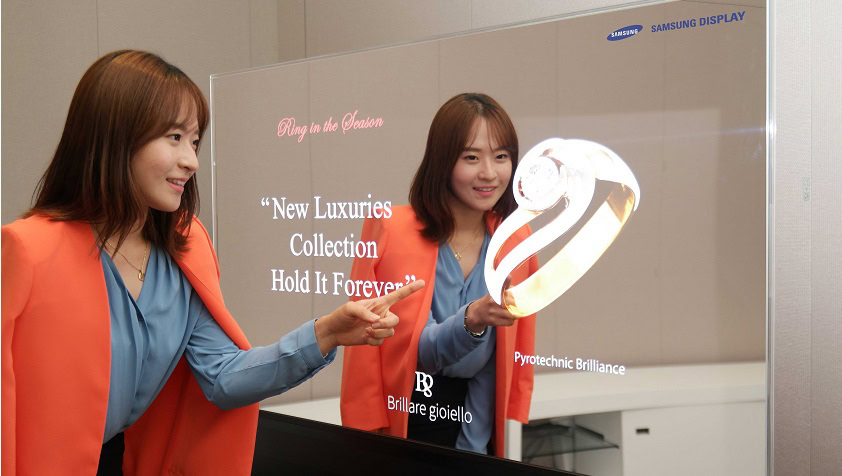Affiliate links on Android Authority may earn us a commission. Learn more.
Samsung announces new transparent and mirror OLED displays
![Samsung-Display]-55-inch-Transparent-OLED_1_1 Samsung-Display-55-inch-Transparent-OLED_1_1](https://www.androidauthority.com/wp-content/uploads/2015/06/Samsung-Display-55-inch-Transparent-OLED_1_1.jpg)
Samsung has introduced its first mirror and transparent OLED display panels today, which the company will be targeting at the personalized shopping market. The company will also be teaming up with Intel to make use of its Real Sense technology, in order to create displays that can also interact with their viewers.
Samsung showcased the technology as an ad billboard and virtual necklace stand, but plans to build the technology into a virtual fitting room, where users can see what various items of clothing would look like before having to try them on.
Intel Real Sense seems like a good fit for this type of market too. The Real Sense platform consists of a series of 3D cameras and a software suite that can recognise people, their actions and surroundings, similar to what Microsoft did with Kinect.
The technology supports gesture controls and face tracking, can measure distances, and can scan objects to be ported into 3D environments. This could lead to some quite novel interactive shopping and ad experiences in the future.
As for the actual display technology, Samsung boasts some big improvements over the competitors in the transparent display market. The company says that its transparent OLED technology has a substantially higher color gamut, increased transmittance and superior viewing angles than conventional LCD alternatives. For comparison, Samsung’s transparency level reaches 40 percent, compared with just 10 percent for LCD. LG’s similar technology was at around 30 percent transparency last year.

As for the Mirror OLED panel, Samsung claims that it reflects more that 75 percent of light, and features improved color gamut, contrast ratios (100,000:1 vs. 4,000:1) and faster response times than LCD (under 1ms vs. 8ms). Another benefit is that OLED technology doesn’t require a backlight, resulting in less light leakage.
While Samsung is clearly marketing this technology at advertisers for now, transparent OLED technology could also eventually find a home in augmented reality situations, including in automotive, smart home, and medical markets. Not forgetting all the weird and wonderful transparent and flexible display smartphone concepts that have appeared over the years.
Samsung certainly isn’t the only company working on transparent display technologies, so whoever is first to market could end up with a big advantage.